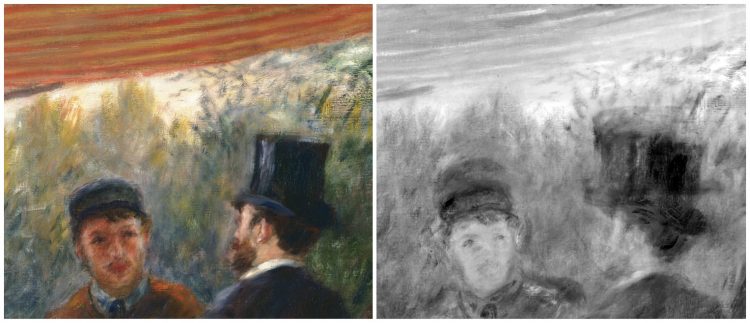In order to understand how Pierre-August Renoir created Luncheon of the Boating Party, a technical study was conducted in the conservation studio. By closely examining the surface and comparing it to x-radiographic and infrared images, we learn that Renoir made numerous changes both large and small over several months. While he deftly captured the moment of friends casually enjoying an afternoon at a restaurant on the Seine, the in-depth analyisis shows that he labored to capture the immediacy of the scene.
Repositioning of the Two Men
The artist made a surprising rearrangement to the pair of men standing at the end of the balcony, indicated in raking light by the underlying textured brushstrokes around their heads. The revision the artist made becomes clear in the infrared image: Charles Ephrussi, wearing the top hat, initially looked out toward the front of the balcony with his head in three- quarter view. By turning him to face the man next to him, Renoir strengthens their relationship, making them appear more involved in conversation.

The infrared image (right) shows a second set of hats, heads, and shoulders, indicating that these
figures were also lowered after the introduction of the awning.

